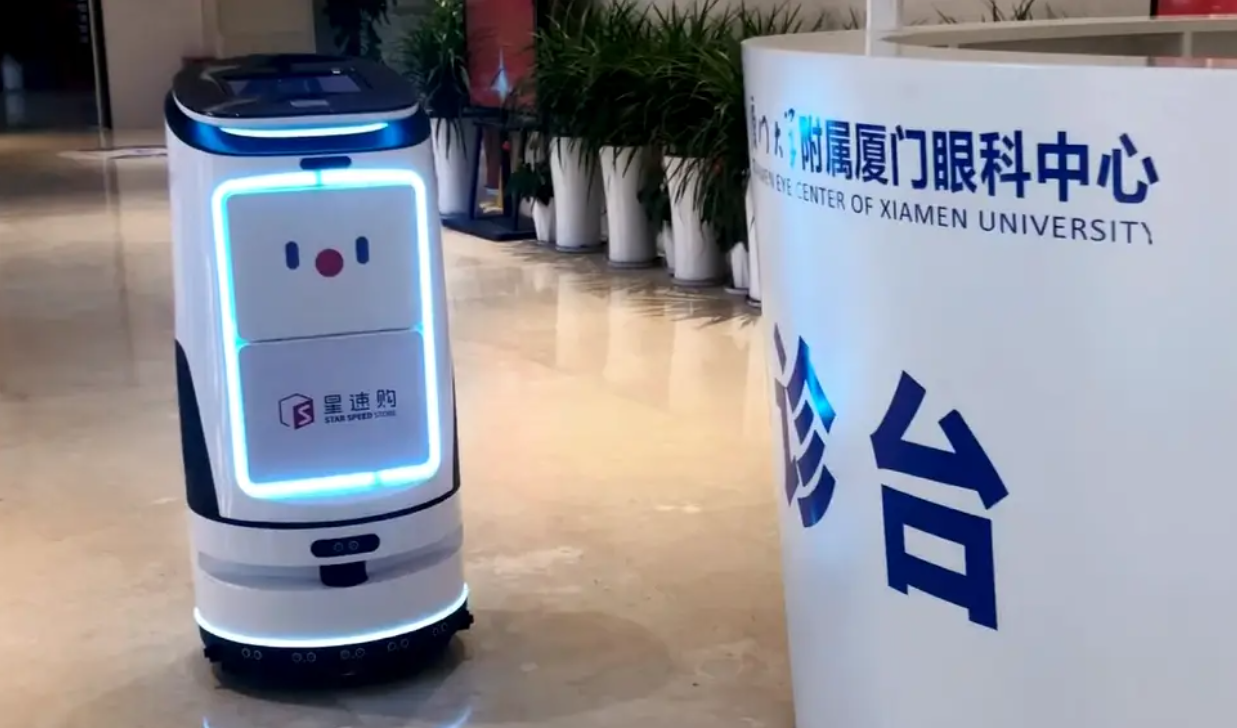Before the pandemic, queuing management kiosks and self-service kiosks were already in use in public venues such as hospitals, banks, and shopping malls, but their demand remained relatively stable. The global outbreak of COVID-19 profoundly impacted the service industry and sparked a massive surge in demand for self-service solutions and queuing management systems. This shift, driven by the need for contactless interactions during the pandemic and a focus on efficiency in the post-pandemic era, has become increasingly significant.
Pandemic-Era Drivers
The Rise of Contactless Services
According to a McKinsey report from 2021, over 70% of consumers expressed a preference for contactless services during the pandemic. This trend accelerated the widespread adoption of self-service solutions, including queuing management kiosks. For example, during the peak of the pandemic, Japan deployed over 50,000 contactless queuing systems in public service and medical facilities to meet heightened safety demands.
Emergency Response in Healthcare
The pandemic placed immense pressure on healthcare systems, where intelligent queuing management kiosks played a crucial role in resource allocation. Frost & Sullivan reported a 45% increase in the deployment rate of intelligent queuing solutions in North American hospitals between 2020 and 2022. These systems significantly enhanced patient flow management and mitigated the risk of cross-infection.
Post-Pandemic Continuity
Changing User Habits
The pandemic altered consumer behavior, making self-service kiosks a preferred choice. A Statista survey revealed that over 50% of global consumers expressed a continued preference for self-service options even after the pandemic subsided.
Long-Term Optimization of Public Spaces
Post-pandemic, governments and organizations have sustained investments in queuing management kiosks to optimize public services. For instance, India has rolled out over 500 smart service centers equipped with queuing management systems to streamline crowd control and service efficiency.

Global Data and Market Trends
Market Growth
According to Grand View Research, the global self-service kiosk market reached $45 billion in 2023 and is projected to grow at a compound annual growth rate (CAGR) of 9.4% through 2030. Queuing management kiosks, as a key segment, are expected to see continued expansion.
Regional Developments
Asia-Pacific: Rapid urbanization and population density have fueled the demand for intelligent queuing solutions. In 2022, China deployed over 30,000 queuing management kiosks across banks, hospitals, and public service venues.
North America: Businesses in the U.S. have intensified their focus on customer experience, with banks and retailers ramping up investments in advanced queuing solutions.
Europe: Privacy-focused and seamless technologies are gaining traction, exemplified by France’s adoption of AI-powered queuing management systems in government offices.
Case Studies: The Impact of Contactless Self-Service Solutions
Hospital Settings
During the pandemic, the People’s Hospital of Jimo District in Shandong Province, China, collaborated with Youngtek to develop contactless multifunctional self-service kiosks. These kiosks utilized dct-plate technology, allowing users to perform tasks such as registration, appointment booking, and payment without touching the screen, significantly reducing cross-infection risks.
Supermarkets
JD Technology rolled out over 700 contactless self-checkout kiosks across 200 supermarkets in provinces including Hubei, Anhui, and Zhejiang. These kiosks enabled customers to independently scan prices, bag items, and complete electronic payments, reducing close contact with cashiers. Dedicated staff sanitized the kiosks every 30 minutes to ensure hygiene and safety.
Pharmacies
The world’s first AI-powered robotic pharmacy was established in Xiamen, China. Leveraging cutting-edge robotics, IoT, AI, and big data, the pharmacy managed an inventory of up to 3,800 medical products. Customers could watch robots retrieve medications through glass panels and access remote consultations with doctors via video systems, enabling 24/7 contactless service.

Key Drivers of Contactless Self-Service Solutions
Reducing Cross-Infection Risks: During the pandemic, heightened awareness of hygiene and safety drove demand for contactless self-service kiosks, which minimized direct human interaction and reassured users.
Enhancing Service Efficiency: By reducing reliance on manual processes, these kiosks allowed users to quickly complete tasks without waiting for staff assistance, shortening transaction times and improving overall efficiency.
Meeting Special Needs: During lockdowns and restricted movement, contactless self-service kiosks ensured access to essential goods and services, supporting basic living needs.
Driving Innovation: The pandemic prompted businesses to increase R&D investment in contactless technologies, accelerating advancements and expanding application scenarios for self-service kiosks.
Conclusion
The pandemic catalyzed a transformative shift in the adoption of queuing management kiosks and self-service kiosks. As these technologies continue to evolve, they are well-positioned to address future challenges and redefine service delivery in a post-pandemic world. Businesses that embrace this trend stand to gain a competitive edge by enhancing operational efficiency and elevating the user experience.





